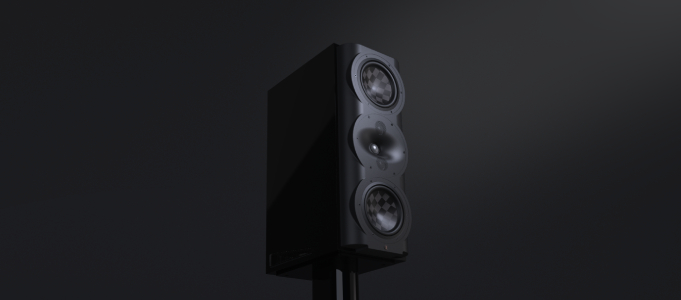Hegel H390 Integrated Amplifier Review

Rafael Todes samples this svelte looking Scandinavian integrated amplifier…
Hegel
H390 Integrated Amplifier
£5,000

This product arrived on the scene at the Munich High End Show in 2019 as a cut-down version of Hegel's huge H590 (£9,300 RRP). It's a lot cheaper at £5,000, and as such, will have far wider appeal – even if it's not exactly a budget product. This is likely to be a strong seller for the Norwegian company. It also shows how far it has come since its inception in 1988 at the Technical University in Trondheim, when founder Bent Holter was making PA amplification for his rock band. Now Hegel has dealers in fifty-three countries and is a significant player on the international audio scene.
Providing a claimed 250W RMS per channel amplification (into 8 ohms; 420W into 4 ohms), it's no shrinking violet. Indeed, the H390 is a reassuringly heavy lift that hints at the rugged construction inside, with its meaty transformer and high-quality power supply capacitors. It's best described as a super-solid looking piece of minimalism, with two black knobs that control input and volume respectively dominating its sleek fascia. There's also a robust metal remote control for couch potatoes, which works well.

GETTING GOING
As with so many modern stereo amplifiers, the H390 is also a streamer and DAC, with an extensive set of digital inputs. You get USB, BNC, coaxial and three TOSLINK optical digital ins, and for analogue addicts, there are two sets of unbalanced RCA inputs and a set of balanced XLRs. It's hard to think of why you'd need more unless you spend more time collecting hi-fi than you do listening to music. Still, there is one omission apparent – unlike its somewhat cheaper competitor from Canada, the Sim Audio Moon Ace, there's no phono stage built in.
Surprisingly, there's no dedicated Hegel app to access the network either. This could be down to cost considerations or simply that there are plenty of available apps that can do the job. I used Mconnect, as suggested by Hegel, which after a slightly shaky start, worked quite well. You have the choice of UPnP or Airplay. I generally prefer the former as it sounds better, but I found myself having to connect with Airplay to see the option of UPnP come up. This may be an issue with my network, but I have no problem with my reference dCS Bartok in this respect.
Disappointingly, there is currently no provision for Roon integration. Most readers will, of course, know that this is a highly developed app that categorises your digital music collection and integrates it well with both Tidal and Qobuz. It provides excellently written content while you are listening, as well as far greater ease of use. The local Hegel distributor tells us that Roon is in the pipeline for the near future; it cannot come too soon as far as I'm concerned…
Internally, the H390 uses true balanced signal paths and processing to preserve dynamic range and lower distortion, the company says; this is also claimed to lower jitter and conversion errors. It's able to decode MQA from any appropriately encoded source via any of its digital inputs, which means you can get so-called hi-res playback from Tidal Masters or MQA downloads. I question the benefit of this technology in these days of cheap and easy bandwidth, but the Hegel does it if you want it and many will.
Overall then, the H390 has the look and feel of a high quality, mid-market specialist audio product. It's not glossy and shiny like some Japanese designs or wilfully quirky like some British ones – but is still nice to use when performing a wide variety of source and amplification duties. For this test, I switched the Hegel on – the power switch being rather curiously hidden underneath the unit – and performed an update that worked seamlessly. I then hooked it up to the first of my two systems, which comprises B&W 802D3 loudspeakers, connected by Townshend's F1 Fractal speaker cable.

THE LISTENING
Hegel's H390 has a powerful yet sweet sound, which is not typically transistor you might say. Smooth and quite subtle, it may not be the last word in space or detail, but it's never unrewarding to listen to. With Simon Rattle conducting the Berlin Philharmonic playing Haydn's 88th Symphony, it made all the right noises. There was plenty of power, good if not exceptional soundstaging, and an enjoyably rhythmic sound that made me want to keep playing music.
A good metric is my dCS Bartók streaming DAC, which is far more expensive than the Hegel but an excellent diagnostic tool to see how other products perform. The H390 didn't fare badly at all; its streamer and digital convertor doing a surprisingly good job as a music source. Of course, the Bartók provided greater pinpoint clarity and gave a sense of the orchestra as a series of individuals sitting in space, rather than in a general wash of sound. Actually, a Chord Poly and Mojo portable DAC/streamer combo held up well too, despite being a good deal cheaper than the Hegel.
While making these initial comparisons, I discovered that the H390's amplifier section performed exceptionally well. Fed with a first-class external source going into the analogue input of the Hegel, it was capable of great things. I heard a lovely musical flow to the proceedings, with lots of fine detail and subtle nuances. Kraftwerk's The Robots from silver disc via the dCS DAC showed just how good Hegel's pre/power section is, with a powerful and commanding sound, bristling with detail.

The unit also benefitted from my PS Audio PS10 power regenerator. Where I live, my AC mains is noisier than many places, so hooking it up to an external power conditioner was a no-brainer. I was surprised by the step change in the improvement here. The H390 suddenly sounded more refined and sweet yet crisper and punchier; this made for a captivating rendition of whatever I chose to play. It's quite possible that people living outside large urban conurbations won't experience the same improvement, but do keep this in mind as the Hegel really needs clean power to give its best.
With my AC mains noise taken care of, Radio 3 on my Magnum Dynalab FM tuner was glorious. A piece of Baroque music by Handel had a tautness to the presentation that was most appealing; this violin concerto displayed the woody and gutty sounds of these lovely stringed instruments with jaw-dropping accuracy. Indeed I've rarely heard this valve tuner sound better, which is no small revelation.
I then moved the Hegel upstairs to drive my pair of Quad ESL-63 electrostatics. I normally use either Trilogy monobloc or Marantz 8b valve power amplifiers to do this. As you would expect, it sounded very different. I heard things I hadn't heard before by listening to a brand new recording of Tchaikovsky's 4th Symphony with Jaarvi and the Tonhalle Orchestra. Bass was tight and well-formed, with a crispness and solidity to the sound that gave the recording more backbone. Some depth perspective was missing compared to my reference valve amplifiers, and the timpani seemed a little more prominent than perhaps it should – but still, the H390 did really well with these sometimes troublesome Quads. Chapeau!
The Hegel's lithe sound was also much appreciated with modern jazz. Kenny Burrell's Chitlins con carne had a wonderfully tight and realistic feel, the H390 sounding fast – almost razor-sharp, in fact – with toe-tapping timing, excellent general transient response and the ability to swing lots of power when called upon so to do. I came to really enjoy this amplifier's general air of musical confidence; it's not showy or glib, just honest, competent and powerful. That means you can enjoy pretty much any genre of music with it.

THE VERDICT
 After a slightly slow start, I came to really enjoy Hegel's H390. Sorting out my mains supply and swapping round loudspeakers showed me that it's a very capable product that – when correctly partnered – has a rather beautiful, organic sound with the ability to pack a real punch and not shy away from awkward loudspeaker loads. Its preamp and power amplifier sections are the jewels in the product's crown, so to speak; the DAC and streamer are very decent, but the amp shines with seriously high-end sources via its line inputs. It's a fully functional, svelte looking product that does a lot very well, and as such, is worthy of recommendation; hear it if you can.
After a slightly slow start, I came to really enjoy Hegel's H390. Sorting out my mains supply and swapping round loudspeakers showed me that it's a very capable product that – when correctly partnered – has a rather beautiful, organic sound with the ability to pack a real punch and not shy away from awkward loudspeaker loads. Its preamp and power amplifier sections are the jewels in the product's crown, so to speak; the DAC and streamer are very decent, but the amp shines with seriously high-end sources via its line inputs. It's a fully functional, svelte looking product that does a lot very well, and as such, is worthy of recommendation; hear it if you can.
For more information visit Hegel
- Auden Distribution

Distributor
Rafael Todes
Gifted violinist Rafael is one quarter of the Allegri String Quartet, playing second fiddle. Once a member of the CBSO under Sir Simon Rattle, he now teaches at London’s Junior Royal Academy. A long-time audiophile, he’s still on a quest for the perfect sound.
Posted in:Hi-Fi Amplifiers Integrated Amplifiers Applause Awards 2021
Tags: hegel auden auden distribution
JOIN IN THE DISCUSSION
Want to share your opinion or get advice from other enthusiasts? Then head into the Message Forums where thousands of other enthusiasts are communicating on a daily basis.
CLICK HERE FOR FREE MEMBERSHIP






